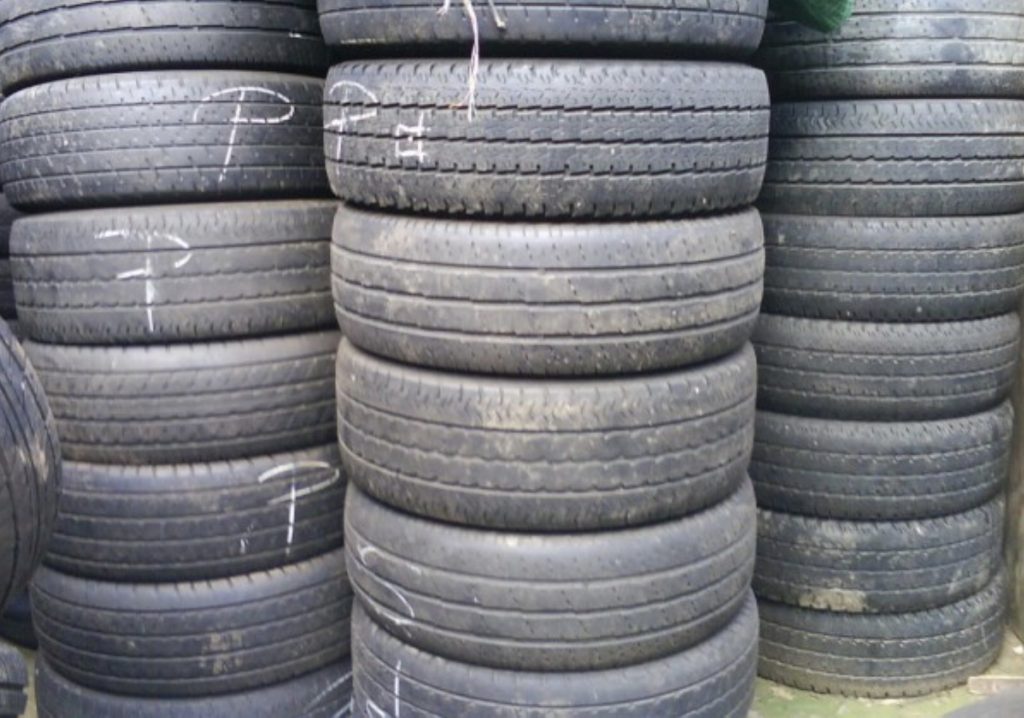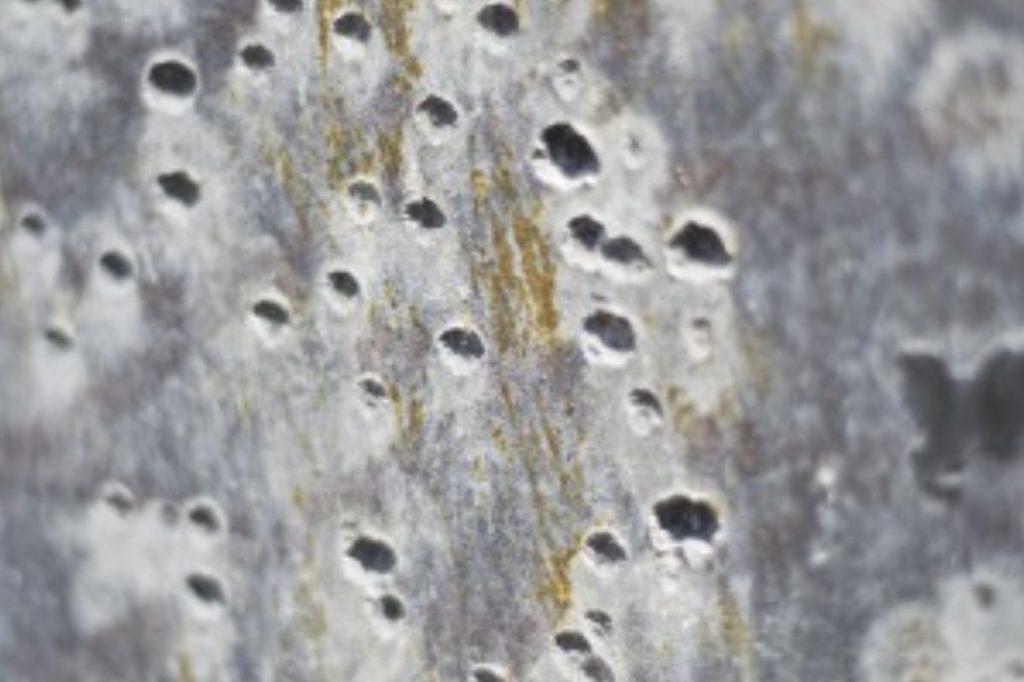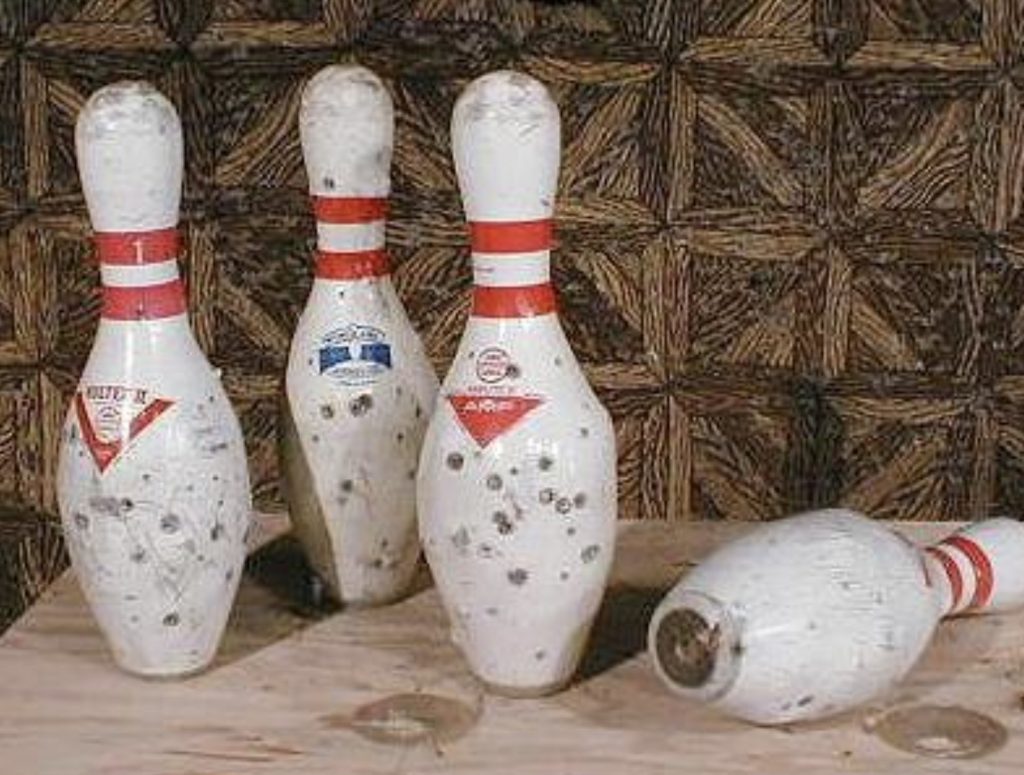
While some things in our industry change, many stay the same, year after year, decade after decade. It is also true that if we do not pass on the lessons to the next generation, they are doomed to make the same mistakes that we did. Case in point; dangerous targets, range props and backdrops on shooting ranges. This is not the first time I have touched on this subject, but enough time has gone by that the lessons warrant repeating.
Tires as Range Props and Berms
Over thirty years ago I was informed of a ricochet incident that happened on a range where I had once trained. A student was struck by a 9mm FMJ bullet in his upper arm. The projectile passed completely through, though it fortunately did not sever the brachial artery. The student was extremely lucky. The same wound, a few inches to the left would have penetrated his chest cavity.
Emergency medical care was administered and training was halted to investigate and determine what happened. The victim had been engaged in a shooting exercise with a number of other students and the bullet came from the downrange direction. At the time, the staff was at a loss for how that had happened.
During the subsequent investigation it was determined that pistol bullets were indeed being redirected or ricocheted in any and all directions by the tire-filled impact berm. You see, the berm had been constructed by stacking hundreds and hundreds of discarded car tires and then filling/covering them with dirt. This berm building technique was extremely popular and seemed a great idea thirty to forty years ago.

During another training situation, I was a student in a law enforcement instructors school. The people who built this particular police range had decided to nail some cut up car tires to the wooden framework that made up the target bunker area down range. When the class attempted to conduct shotgun training using birdshot loads, several students were struck by lead pellets bouncing back from the impact area. No one sustained any real injury, but the training program had to be altered. I should not have to mention that a piece of birdshot to the cornea of your eye could do irreparable damage.
People look at tires and think, “It’s made of rubber and rubber is soft, so it will absorb the bullets.” Yes, rubber is soft, but the steel belts inside the radial tires are not. Neither is the Kevlar that many modern tires are constructed with. Remember Kevlar, the stuff we make body armor out of?
Cheap or Damaged Steel Targets

During the last ten to fifteen years or so, professionally manufactured steel targets have improved tremendously. It used to be that the majority of the steel targets for sale were rated “Pistol Only” and the “Rifle Use” targets were expensive and more difficult to acquire. Today, that has changed to the point where “Pistol Only” steel targets are the exception, not the rule.
A dangerous situation occurs when you encounter the “home-made” steel targets. These will almost immediately start to warp and then they will also develop deep pits. This is when things get dangerous. Bullet fragments and entire projectiles will start to ricochet off the damaged steel in all directions. This is not that big a deal if the target is 100 yards down range, but if it is only 15 yards down range the “bullet splash” and large chunks of projectiles can get you.
People who use cheap or damaged steel targets soon get to play a little game we call “pluck the jacket pieces out of your skin”. During one instance, I witnessed a backsplash injury where a shooting was clipped in the forehead by a piece of bullet jacket. Although relatively small, the wound bled like crazy, as head wounds are wont to do. During that particular instance, the injured man was struck by a splash from someone else’s shot.
Bowling Pins

Thirty or so years back, bowling pin shoots were all the rage on a national and local level. A shooting club of which I was a member was excited to announce that they were building a bowling pin bunker and table so we could have weekend matches.
For those uninitiated, a bowling pin match consists of a table/bench and five standard bowling pins. Generally, the pins were acquired by making friends with the owner of a local bowling alley. Often they would donate them when the old pins were traded for new.
One afternoon I was practicing pin shooting with a .357 Magnum revolver loaded with much less expensive .38 Special ammunition. Bang, Bang, Bang, Thump, something struck me dead center in my chest. It did not break my skin but it felt like someone threw a small rock at me. There, at my feet, was a bullet. The ammo I was firing was jacketed and the bullet was barely deformed. I was in my mid-twenties and quite surprised at what had happened.
Speaking with an older friend with much more competition experience, he chuckled at me. “Bowling pins are notorious ricochet hazards,” he said. “especially with solid lead or full metal jacket bullets. That’s one of the reasons many pin matches require hollow-point ammo.” Bowling pins are much tougher that people give them credit for and handgun ammunition is not as powerful as people imagine. A relatively slow-moving pistol bullet, particularly an FMJ, will hit a pin and bounce backwards, sideways, wherever, in an unpredictable fashion. Yes, the projectile will expend the vast majority of its energy in the target, but a ricochet to the face or throat is going to ruin your day.
Range Props
Range props and barricade material that is “down range” needs to be built of material that is more likely to absorb a bullet than to bounce it off. Plastic barrels should replace steel drums. Old steel mailboxes or even steel fire hydrants (yes, I have seen these on police ranges) are a serious ricochet hazard and should be removed.
Shooters, particularly the ones using pistol, shotgun, and rifles onto which they have mounted some type of optic will frequently fail to properly calculate the bore to sight offset and wind up shooting the barrier or barricade on the range. If the barrier is a plastic drum or made of wood, that situation is just embarrassing and no one gets hurt. However, if the barrier material is steel, brick or cinder block, we now have a dangerous ricochet / backsplash hazard.
Build your barricades and cover material out of plywood and 2×4 material and/or use plastic barrels, not steel 55 gallon drums. Sure, you might have to replace them more often but the cost of a lawsuit for negligence could have to pay for a thousand new barricades.
Parting Shots
Just in case no one told you yet, I will touch on a few other hazards. Rifle and pistol bullets will indeed “skip” off of flat water surfaces and keep going. Yes, the angle of the shot makes a big difference. Pistol bullets and 00 buckshot will skip off of hard surfaces; concrete, asphalt, brick walls etc. and keep right on going. Rifle bullets will generally shatter and fragment on concrete and the like.
Also, a dirt berm that has been fired into for twenty years or so will build up a wall of hazardous ricochet material. Dirt and sand berms need to be “mined” out periodically and repaired with fresh earth.
Finally, follow the 4 Universal Safety Rules, not just one or two. An Ocala, Florida police officer was killed by an ND ricochet on a police range because someone else did not follow all 4 rules.
Paul G. Markel is a combat decorated United States Marine veteran. He is also the founder of Student the Gun University and has been teaching Small Arms & Tactics to military personnel, police officers, and citizens for over three decades.

True story…
Last month I personally witnessed a LEO at the range incur an ND, only ten feet from me. This guy had exclaimed earlier he was a certified instructor. I watched him as he removed his magazine while (distractedly) talking with someone next to him, take his focus off his gun while speaking to the other person about something, and then point his gun at a target to demonstrate some sort of principle. Then his gun went “BANG!” He was startled as I clearly heard him say “S**t, I thought it was empty.” Fortunately, his muzzle was pointed downrange, but any and all possibility of respect for him as someone to listen to went out the window.
SCotUS just ruled Trump has blanket immunity for official acts :
https://www.scotusblog.com/2024/07/announcement-of-opinions-for-monday-july-1/
The freak-out by the left will be *glorious* to behold…
I’m always more concerned with being the victim of careless firearm use at the range than I am of doing it. I have left the range many times because of someone’s carelessness. Fortunately our range has cameras and I know the Rangers responsible for patrolling it personally. I have on more than 1 occasion reported unsafe firearm usage to them along with the description of the perpetrator(s). license number and description of their vehicle(s). Which resulted in them being banned from the range for up to a year. Our range also requires attending a new training course and retesting to return to the range after being banned.
My girlfriend’s nephew and another young man were sitting in the nephew’s truck when the young man was showing the nephew his gun.
The young man pulled the magazine out and said to the nephew, it is unloaded and then placed the muzzle to the side of his face and pulled the trigger discharging a round into his face.
His face is now highly scarred and lucky he did not place it higher up on his head.
Plus he now has to live with the stigma of his mistake.
I remember when I showed my girlfriend my pistol and she said, “THAT”S IT”, who do you think is going to have any fun with that and I said Me.
Thanks for the insightful list of potentially hazardous targets! I once learned a similar lesson when shooting in a national forest. A huge granite boulder was selected as a backstop, as I thought it would be adequate for stopping cast lead 45 ACP. It indeed stopped all the rounds, but one good sized chunk came back to it’s departure point and drew blood from my forearm. Thankfully it didn’t hit elsewhere and I had eye protection. But that day, I learned a valuable lesson to select targets and backstops carefully.